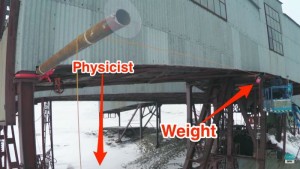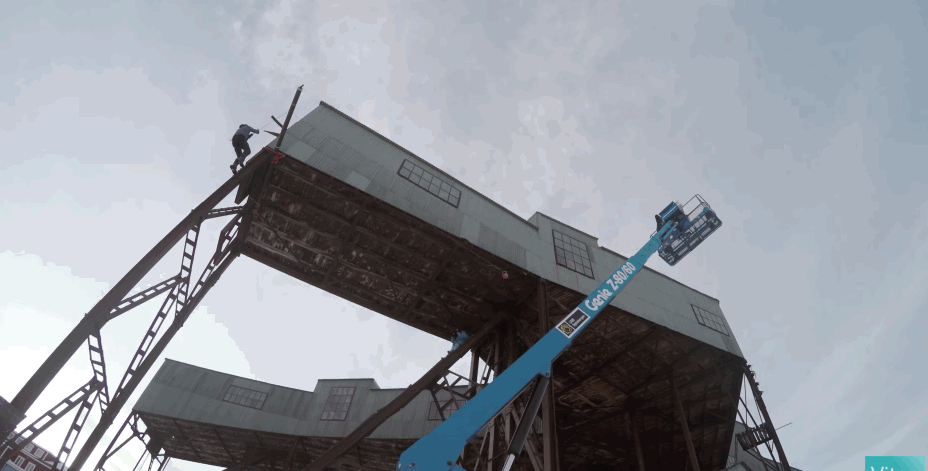Physicist Ties Himself to a Building and Falls to the Ground to Prove Theory : A Well Thought Out SCream by James Riordan

Andreas Wahl, a Norwegian physicist, tied himself to the side of building forty-five feet off the ground to demonstrate a basic property of physics. The only thing keeping him from falling and potentially breaking a body part, or several, was a cable with a weight attached to the end. At first, the weight was secured to the building.
But then a few of Wahl’s colleagues released the weight and Wahl immediately began to plummet to the ground.
While Wahl’s experiment seems risky, he’s actually perfectly safe. And that’s all thanks to a fundamental property of physics called centripetal force.
When Wahl’s colleagues released the weight, both he and it started to fall. Wahl fell straight under the force of gravity, but the weight — because it was placed at a distance from Wahl — traced an arc through the air, just like a swinging pendulum.
The weight underwent what Isaac Newton first described in the 17th century as centripetal force — the force that makes a body follow a curved path. In this case, the force was the tension from the cable.
As the force of gravity pulled the weight down, tension from the cable pulled it toward a central point — the pipe. This induced an arc, which you can see below:
One important note: The friction between the cable and the pipe — as well as the cable’s elasticity — gradually slow Wahl’s motion as he drops. This reduces the jerk he felt when he comes to a halt. If he’d stopped suddenly, he might have seriously injured himself.
Therefore, don’t try this at home. Leave this sort of thing to the physicists.






No Comment